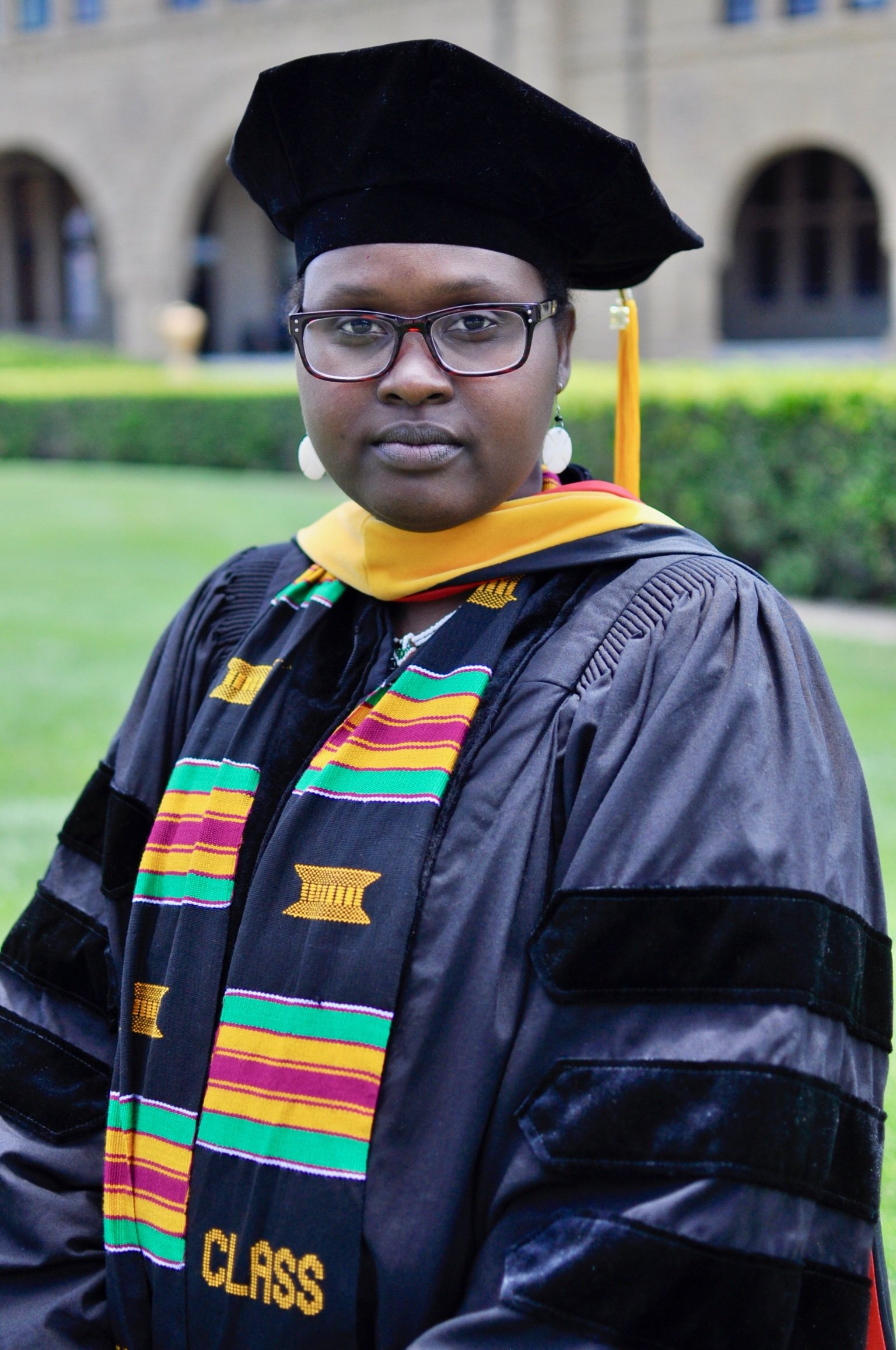
Dr. Kamariza’s journey
Born in Burundi, Dr. Mireille Kamariza faced many barriers to becoming a scientist. It was only after immigrating to the United States and later when she started her undergraduate schooling at San Diego Mesa College that her scientific journey began. Given her background and personal interests, Dr. Kamariza’s scientific research has since grown to focus on tackling important questions in infectious disease research, especially those that may have direct impact in her country of origin.
Beyond her research duties, Dr. Kamariza is dedicated to increasing diversity in STEM. She has founded and launched several student groups that have gone onto becoming pillars of diversity initiatives during her undergraduate and graduate career. Additionally, she has developed programming to inspire the scientific community to push towards more inclusive research practices and academic agendas. Ultimately, Dr. Kamariza intend to continue leveraging equity and inclusion in social practices and in scientific designs of academic research.
Dr. Mireille Kamariza at her graduation from Stanford University. June 2019.
Doctoral studies
While pursuing a PhD at UC Berkeley at first, and later at Stanford University, Dr. Kamariza worked with world- renowned chemical biology professor Dr. Carolyn Bertozzi to investigate using chemical biology tools to study Mycobacterium tuberculosis, the causative agent of tuberculosis. During this time, she demonstrated that environment-sensitive (or solvatochromic) dye conjugates could be used to detect Mycobacterium tuberculosis (Mtb), the causative agent of tuberculosis (TB), rapidly and specifically at the point-of-care. Solvatochromic molecules can change their fluorescence brightness or color based on solvent polarity. Traditionally used to assess biomolecular protein structure and folding, Dr. Kamariza collaborated with Dr. Peyton Shieh to repurpose these probes for the visualization of cell wall dynamics in mycobacteria. They conjugated the dyes to trehalose, the sugar component of the mycobacterial cell, which enabled delivery of the probes into the cell surface. The cell wall is highly hydrophobic and leads to a fluorescence turn-on and, therefore, the rapid visualization of mycobacteria.
Subsequently, Dr. Kamariza established a collaboration with Witwatersrand University’s Prof. Bavesh Kana to determine the utility of these novel probes for TB diagnosis using sputum samples isolated from patients with active TB disease in South Africa. They confirmed that DMN-Tre labeling detects M. tuberculosis cells in sputum samples from TB-positive patients. Incredibly, the test can report on drug sensitivity of clinical TB strains within a matter of hours. Strains that are resistant to the front-line drug isoniazid show dramatically reduced labeling compared to sensitive strains. This capability demonstrated capacity to improve stratification of appropriate drug regimens within a single day (whereas at present sputum cultures must be expanded over several weeks in the presences of TB drugs).
undergraduate research
Just two years after immigrating to the United States, while studying at the San Diego Mesa Community College, Dr. Kamariza was selected to participate as a 2009 Howard Hughes summer research scholar, a program for community college students at the University of California San Diego (UCSD). After her summer program, she presented her my findings at the Society for Advancement of Chicanos/Hispanics and Native Americans in Science (SACNAS) national conference that year. After transferring to UCSD, she continued her training in biochemistry with Dr. Tracy Johnson. Together, they investigated the role of the nuclear Cap Binding Complex (CBC) during splicing of the buddying yeast Saccharomyeces cerevisiae in response to environmental stress conditions. Prof. Johnson’s guidance and mentorship during this time is what cemented Dr. Kamariza’s intention to apply to (and eventually attend) PhD programs. Upon graduating from UC San Diego in 2012, Dr. Kamariza began her doctoral work at UC Berkeley in the Molecular and Cellular Biology department, with a focus in biochemistry and chemical biology.

